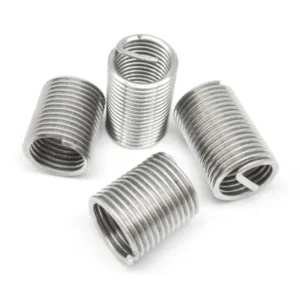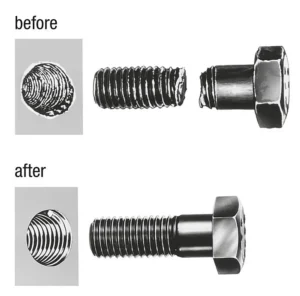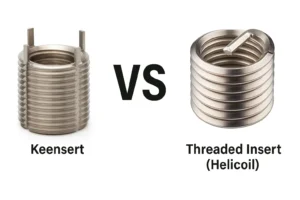5 Key Things to Make the Most of Rivet Nuts
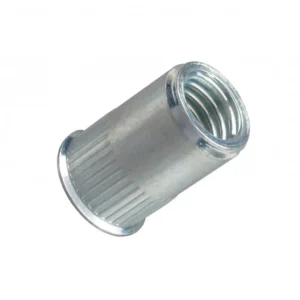
Leading Rivet Nut Manufacturer and Supplier in China
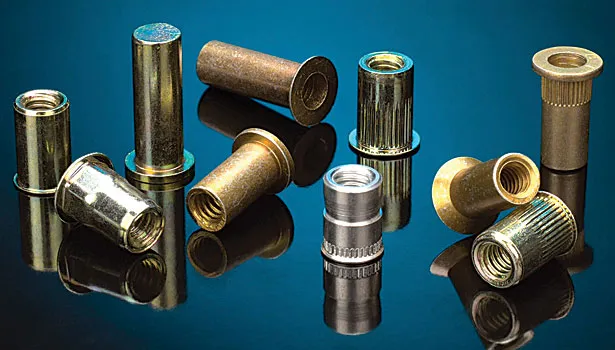
Rivet nuts are a versatile fastening solution, but to make the most of rivet nuts, you need the right approach. From selecting the best type to ensuring proper installation, small details can significantly impact their performance. Whether you’re working with metal, plastic, or composite materials, following key best practices will enhance strength, durability, and reliability. In this guide, we’ll cover five essential tips to help you maximize the effectiveness of rivet nuts in your projects.
Table of Contents
How to Choose the Right Rivet Nut?

Choosing the right rivet nut is crucial for ensuring the stability and durability of fasteners. Different types of rivet nuts are suitable for various materials and applications, so it’s essential to consider factors such as material, installation requirements, and load conditions when making a selection.
1. Types and Features of Rivet Nuts
- The bottom is sealed to prevent the bolt from passing through, making it suitable for environments requiring sealing or contamination prevention.
- Ideal for applications with exposure to liquids or dust, such as automotive and electronics.
- Commonly used with metal sheets for enhanced corrosion resistance.
- The head remains exposed, providing good support and making it suitable for standard installations.
- Can be used with metals, plastics, and wood for a stable installation.
- Ideal for applications requiring high tensile strength, such as machining and structural connections.
- Suitable for applications that require a flush surface, such as aerospace and precision instruments.
- The head sits flush with the material, reducing protrusion and enhancing aesthetics.
- Works well with thin metals or plastic materials and is effective in confined installation spaces.
2. Choosing the Right Rivet Nut Based on Material
Different base materials require specific types of rivet nuts for optimal performance. Here are some recommendations based on material type:
- Carbon steel or stainless steel rivet nuts are recommended for better strength and corrosion resistance.
- For thin metal sheets, closed-end or countersunk rivet nuts ensure a firm connection.
- If higher load capacity is needed, thick-walled rivet nuts should be used.
- Since plastic is a softer material, jack nuts are recommended because their expansion design distributes force evenly, preventing material damage.
- Low-strength aluminum rivet nuts can also be used to minimize stress concentration on plastic surfaces.
- Wood is prone to cracking, so bulb-type rivet nuts (also known as expansion rivet nuts) are ideal as their expansion mechanism reduces material damage.
- Flat head rivet nuts are also an option, as they provide a larger bearing surface to enhance holding strength.
- Avoid blind rivet nuts, as wood lacks strong internal thread engagement, which may affect fastening effectiveness.
3. Additional Considerations When Choosing Rivet Nuts
Load Capacity
- If a rivet nut needs to withstand high tensile or shear loads, choose high-strength materials such as carbon steel, stainless steel, or alloy steel to prevent breakage or loosening.
- For heavy-load applications such as machinery or automotive manufacturing, thick-walled rivet nuts should be used to increase strength.
Corrosion Resistance
- For moist, chemical, or outdoor environments, opt for stainless steel (304, 316) or zinc-plated rivet nuts to prevent rust and corrosion.
- Aluminum rivet nuts offer moderate corrosion resistance and are suitable for lightweight applications where high strength is not a primary concern, such as aerospace or electronics.
Installation Space
- Countersunk Rivet Nut: Best for applications requiring a flush surface, such as furniture, electronics, or automotive interiors, ensuring no protrusions after fastening.
- Closed-End Rivet Nut: Ideal for dustproof, moisture-proof, or liquid environments, preventing contaminants from entering the connection hole. Commonly used in medical equipment and food processing machinery.
- Reduced Head Rivet Nut: Designed for tight installation spaces, particularly useful for thin panels or confined areas where interference with other components must be minimized.
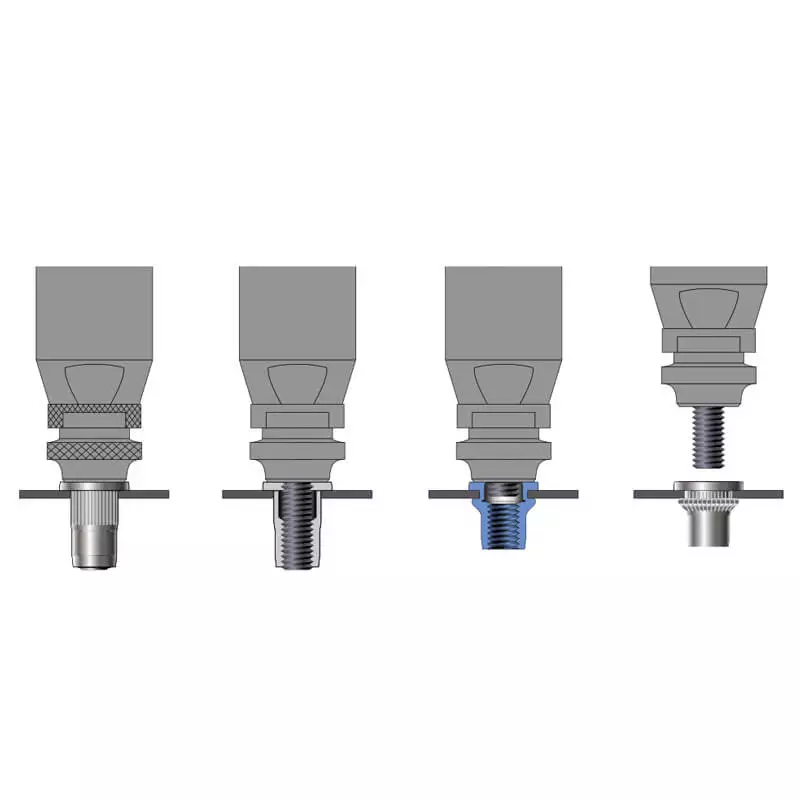
Different types of rivet nuts require matching installation tools to ensure a secure fastening. The most common tools include:
- Suitable for small batch installations or low-strength rivet nuts (such as aluminum or thin-walled nuts).
- Easy to operate, making it ideal for DIY and repair applications.
- Suitable for medium-scale production, such as home appliances, electronics, and light machinery manufacturing.
- Improves installation efficiency and reduces human error.
Hydraulic Rivet Nut Tool
- Best for high-strength rivet nuts (such as stainless steel and carbon steel) and large-scale industrial production.
- Provides greater pulling force, ensuring the rivet nut is fully deformed and securely fastened.
2. Correct Installation Steps
1. Drilling the Hole
- Select the correct hole diameter based on the rivet nut specifications (the hole should be slightly larger than the rivet nut’s outer diameter to ensure proper fit).
- Ensure the hole edges are smooth and free of burrs to avoid affecting the stability of the rivet nut installation.
2. Installing the Rivet Nut
- Attach the rivet nut to the tool and insert it into the hole.
- Apply pulling force using the tool, allowing the rivet nut’s expansion section to spread and firmly grip the material.
- Avoid excessive force, as this may damage the rivet nut or deform the hole.
3. Checking the Installation Quality
- Thread Alignment: Ensure the internal threads are undamaged and that the bolt can be smoothly inserted.
- Secure Fit: Lightly shake the rivet nut to confirm that it does not move or rotate.
3. Avoiding Common Installation Errors
Over-Tightening:
- Excessive pulling force may cause the rivet nut to lose its elastic deformation or even damage the threads, reducing fastening effectiveness.
- Solution: Use proper torque settings based on the rivet nut’s material and thickness to prevent over-stretching.
- If the hole is too large, the rivet nut may become loose, reducing its holding strength.
- If the hole is too small, the rivet nut may not install properly or may deform unevenly.
- Solution: Follow the manufacturer’s specifications when drilling holes and use the correct drill bit and deburring tool to ensure high-quality holes.
Incomplete Deformation of the Rivet Nut:
- This may result in poor fastening, causing the rivet nut to rotate or fall off.
- Solution: Ensure the installation tool applies sufficient pulling force so that the rivet nut’s expansion section fully spreads and tightly grips the material surface.
Do You Have Any Questions?
Let Us Solve Your Problem
How to Determine the Load Capacity of Rivet Nuts?
The load capacity of a rivet nut primarily depends on its material, size, wall thickness, installation quality, and load direction. When selecting a rivet nut, it is essential to consider both tensile strength and shear strength to ensure a stable and secure connection.
1. Rivet Nut Material and Load Capacity
Different materials offer varying levels of tensile and shear strength. Below is a comparison of common rivet nut materials:
| Material | Characteristics | Tensile Strength (MPa) | Shear Strength (MPa) | Application Scenarios |
| Carbon Steel | High strength, durable, moderate cost | 400 – 600 | 250 – 400 | Machinery, construction, automotive |
| Stainless Steel | Excellent corrosion resistance, high strength | 500 – 800 | 300 – 500 | Aerospace, marine, outdoor equipment |
| Aluminum Alloy | Lightweight, corrosion-resistant, but lower strength | 200 – 300 | 100 – 200 | Electronics, lightweight structures, home appliances |
Selection Recommendations:
- High-load applications (e.g., mechanical engineering, construction) → Choose carbon steel or stainless steel rivet nuts
- Corrosive environments (e.g., outdoor equipment, marine applications) → Choose stainless steel rivet nuts
- Lightweight applications (e.g., aerospace, electronics) → Choose aluminum alloy rivet nuts
2. Understanding Tensile and Shear Strength
- Tensile Strength: Measures the axial (vertical) load capacity of a rivet nut. Excessive tensile force can cause the rivet nut to be pulled out or break.
- Shear Strength: Measures the horizontal (shear) load capacity of a rivet nut. Excessive shear force can lead to rivet nut failure along the contact surface.
Reference Load Capacity for Common Rivet Nut Sizes (Carbon Steel Example)
| Rivet Nut Sizes (Imperial) | Tensile Strength (N) | Shear Strength (N) |
| #6-32 | 5,000 – 7,500 | 3,500 – 5,500 |
| #8-32 | 6,500 – 9,000 | 4,500 – 6,500 |
| 1/4″-20 | 12,000 – 15,000 | 9,000 – 12,000 |
| 3/8″-16 | 22,000 – 28,000 | 15,000 – 22,000 |
| Rivet Nut Sizes (Metric) | Tensile Strength (N) | Shear Strength (N) |
| M4 | 6,000 – 8,500 | 4,500 – 6,500 |
| M6 | 12,000 – 16,000 | 9,000 – 13,000 |
| M8 | 20,000 – 25,000 | 14,000 – 19,000 |
| M10 | 28,000 – 35,000 | 20,000 – 26,000 |
Selection Recommendations:
- For high tensile load applications (e.g., hanging components) → Choose larger rivet nuts (M8 or above).
- For high shear load applications (e.g., mechanical joints) → Choose thicker-walled rivet nuts and ensure the hole size is properly matched.
3. How to Test the Load Capacity of Rivet Nuts?
Objective: Measures the maximum force required to pull the rivet nut out of the hole.
Test Method:
- Use a tensile testing machine to gradually increase the pull force until the rivet nut detaches or the material fails.
- Record the maximum load before failure (N).
Objective: Measures the rivet nut’s maximum load capacity under lateral (shear) force.
Test Method:
- Apply a horizontal force to the rivet nut while it is secured in place.
- Continue increasing the force until the rivet nut fractures or slips.
- Record the shear failure force (N).
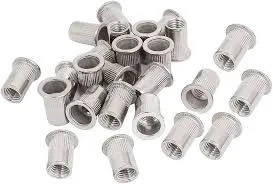
1. Issue: Rivet Nut Loosening
Cause Analysis:
- Improper Installation: The expansion section of the rivet nut may not fully expand, resulting in insufficient holding force.
- Vibration Impact: Long-term exposure to mechanical vibration or impact loads may cause the rivet nut to gradually loosen.
- Hole Size Too Large: If the installation hole is larger than the recommended size, the rivet nut may not be able to clamp securely.
Preventive Measures:
- Ensure Correct Installation: Use the proper installation tools to ensure the expansion section of the rivet nut fully expands and tightly fits against the base material.
- Choose Anti-loosening Measures: In high-vibration environments, use rivet nuts with locking features or apply thread-locking adhesive to the threads.
- Ensure Proper Hole Size: Drill holes according to the recommended size for the rivet nut to avoid holes being too large or too small.
2. Issue: Stripped Threads (Thread Damage)
Cause Analysis:
- Excessive Tightening Force: Applying a torque higher than the thread’s capacity during installation can lead to stripped threads.
- Soft Material: Rivet nuts made of aluminum alloy or thin material may suffer thread damage under high-strength fastening.
- Excessive Reuse: Repeatedly using the rivet nut can cause thread wear, resulting in stripped threads.
Preventive Measures:
- Control Installation Torque: Use a torque wrench to ensure the fastening torque is within the recommended range (refer to the rivet nut torque standards).
- Choose the Right Material: For high-strength applications, use carbon steel or stainless steel rivet nuts rather than aluminum alloy.
- Avoid Reuse: If threads are visibly worn, replace the rivet nut with a new one instead of reusing the old one.
3. Issue: Rivet Nut Deformation (Damage During Installation)
Cause Analysis:
- Hole Size Too Small: A small hole diameter can cause uneven force distribution during expansion, leading to deformation.
- Thin Wall Thickness: Thin-walled rivet nuts may fracture or bend under high-strength fastening.
- Improper Tool Selection: Using mismatched tools, such as a non-compatible rivet nut tool or manual tool, may result in deformation.
Preventive Measures:
- Check Hole Size: Use a standard drill bit to ensure the hole diameter matches the recommended size for the rivet nut.
- Select Suitable Rivet Nut: For high-load applications, choose reinforced rivet nuts with thicker walls.
- Use Appropriate Installation Tools: For larger rivet nuts or high-strength materials, it is recommended to use pneumatic or hydraulic rivet nut tools to ensure even force distribution.
4. Issue: Rivet Nut Detachment (Inability to Fix Securely)
Cause Analysis:
- Base Material Too Soft or Thin: Rivet nuts may not secure properly on low-strength materials (e.g., plastic, thin metal sheets).
- Incorrect Load Direction: Rivet nuts are primarily designed for axial (vertical) loading. If subjected to significant lateral (shear) force, they may detach.
- Environmental Factors: Over time, exposure to moisture or corrosive environments may cause the rivet nut’s bonding strength with the base material to decrease.
Preventive Measures:
- Strengthen Base Material: For thin sheets, choose large-flange rivet nuts or add washers around the installation hole to increase the contact area.
- Choose the Right Rivet Nut Type: For applications subject to significant lateral forces, select countersunk or hexagonal rivet nuts to improve shear resistance.
- Corrosion Protection: In humid environments, use stainless steel rivet nuts or those treated with galvanized or nickel-plated coatings to enhance durability.
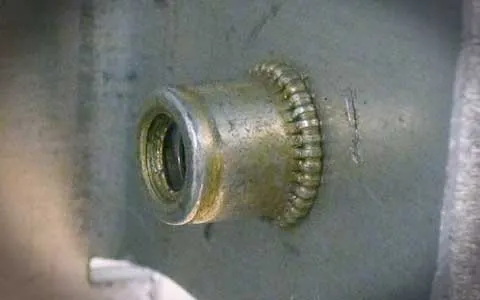
1. Working Principle of Rivet Nuts
Rivet nuts firmly bond with the base material through expansion or flanging deformation. During installation, the rear end of the rivet nut undergoes plastic deformation, allowing it to securely fasten to the surface of the material. Therefore, once installed, the rivet nut is typically not removable without damage.
Unlike traditional nuts, rivet nuts do not rely on friction to lock in place; instead, they grip the material through deformation. As a result, in most cases, rivet nuts are not suitable for reuse, especially if deformation or damage has occurred during disassembly.
2. Under What Circumstances Can Rivet Nuts Be Reused?
Although most rivet nuts are single-use, there are a few special cases where reuse can be considered:
(1) Rivet Nut Has Not Experienced Significant Deformation or Damage
- If the rivet nut has not been overstretched or does not have cracks during installation, it may still retain good fastening ability after disassembly.
- This is suitable for softer materials (e.g., plastics, thin aluminum sheets) where the rivet nut is subjected to low loads.
(2) Rivet Nut with Reusable Design
- Some reusable rivet nuts (e.g., bolt-locking type rivet nuts) allow for reuse after disassembly, but these types are relatively rare.
- There are also non-expansion rivet nuts that use mechanical locking methods and retain their shape after removal, allowing multiple uses.
(3) Correct Disassembly Method
- Using special disassembly tools (e.g., reverse pull-out tools or dedicated fixtures) can minimize damage to the rivet nut and increase the likelihood of reuse.
- Avoid forceful disassembly, as forcibly removing the rivet nut may deform its expansion section, affecting subsequent use.
3. Under What Circumstances Should Rivet Nuts Not Be Reused?
(1) Rivet Nut Deformation
- Since the expansion section of the rivet nut undergoes permanent deformation during installation, the original expansion force will be lost once disassembled, leading to reduced fastening capability.
- When reinstalled, the rivet nut may not provide sufficient clamping force, resulting in an unstable connection.
(2) Thread Damage on Rivet Nut
- If the internal threads of the rivet nut become worn, stripped, or broken during use, it will no longer provide a reliable connection, even if the body of the rivet nut remains intact.
- This is more likely to occur in high-frequency disassembly or high-load environments.
(3) Installation Hole Damage or Enlargement
- If the installation hole in the base material deforms or enlarges during disassembly, even if the rivet nut is intact, it may not guarantee a secure installation upon reassembly.
- In such cases, a larger rivet nut should be used, or the installation hole should be repaired before reinstallation.
(4) Rivet Nut Corrosion
- If the surface of the rivet nut shows rust or corrosion, it may affect its strength and thread engagement ability.
- Rivet nuts used in humid or chemically corrosive environments should be replaced, rather than reused.
If you need to remove a rivet nut and wish to minimize damage, follow these steps:
(1) Use Appropriate Tools
- Reverse Pull-out Tool: This tool can extract the rivet nut by applying reverse force without damaging the installation hole.
- Drilling Method: Use a drill bit that matches the diameter of the rivet nut and drill along the center axis to destructively remove the rivet nut.
- Bolt Backing Method: For rivet nuts that have not fully expanded, you can attempt to slowly pull them out by turning in a bolt.
(2) Avoid Forceful Removal
- Do not hammer the rivet nut directly, as this could cause deformation or damage to the base material.
- Do not pull the rivet nut with pliers, as this could damage the expansion section, making it unsuitable for reuse.
| Condition | Can the Rivet Nut Be Reused? | Reason |
| Rivet Nut Not Deformed | May be reused | Rivet nut remains intact and does not affect clamping force |
| Rivet Nut Has Expanded Deformation | No | Deformation results in insufficient clamping force |
| Rivet Nut Thread Damage | No | May prevent bolts from fastening securely |
| Installation Hole Enlarged | No | Reinstallation may lead to loosening |
| Rivet Nut Corroded | No | Corrosion affects strength and stability |
In most cases, rivet nuts are single-use and not suitable for reuse. If frequent disassembly is required, it is recommended to choose reusable nuts or replace the rivet nut to ensure a secure and stable connection.
Do You Have Any Questions?
Let Us Solve Your Problem
Buy Rivet Nuts from Rivetfix

As a leading fastener manufacturer in China with more than 15 years in the industry, Rivetfix are committed to providing first-class quality fasteners and responsive services to the world.
Rivetfix offers a wide range of rivet nuts and rivet nut tools designed to meet the unique demands of your projects. Rivetfix ensures you have the right solution for every application. Choose Rivetfix for versatile, cost-effective, and durable fastening solutions tailored to your specific needs. In addition, we can also provide customized rivet nuts service according to your requirements.
Contact us for project advice and the latest rivet nuts and rivet nut tools quote!
Get High Quality Rivet Nuts Quote!
Send Your Rivet Nut Request
For more than 20 years, Rivetfix has helped customers solve many rivet nuts sourcing needs and technical challenges.
Have a question? Contact us and we’ll provide you with the perfect solution.


